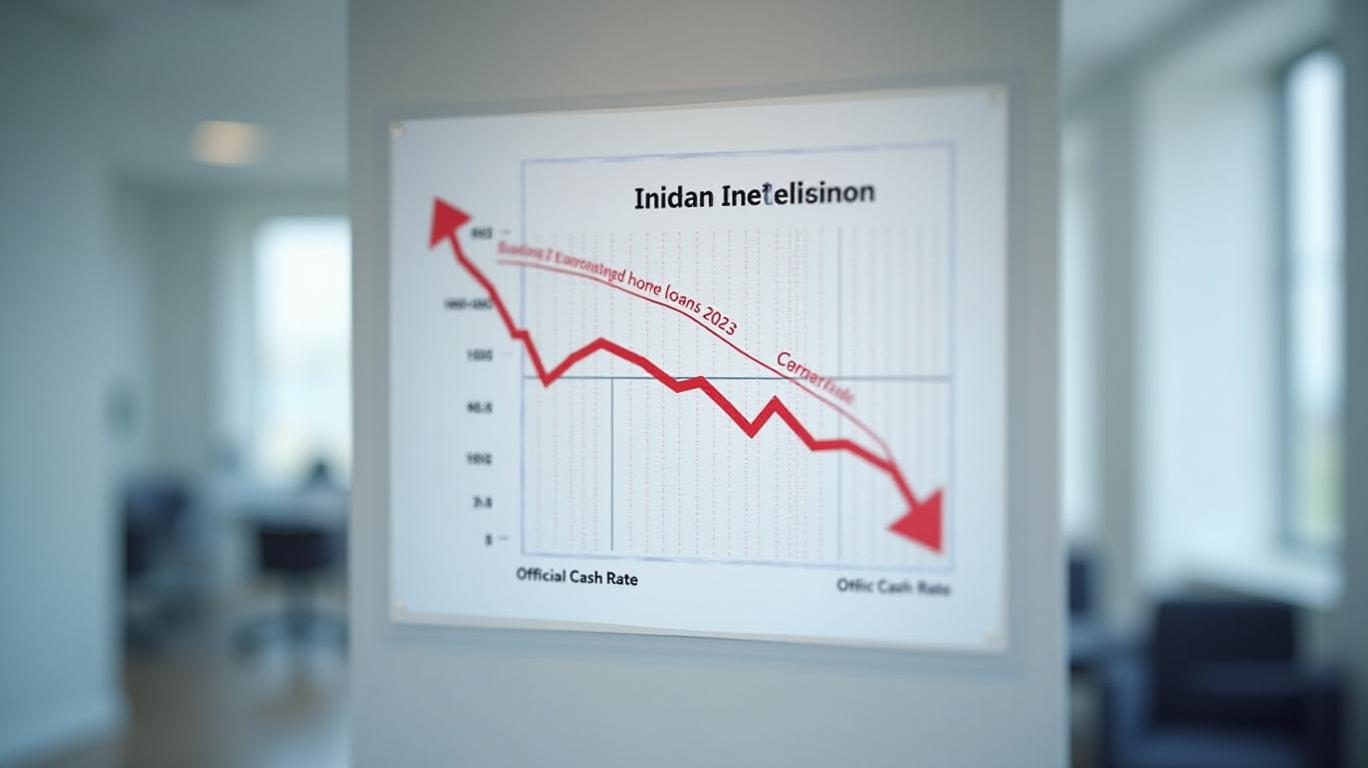ANZ Rate Cuts Create Critical Refinancing Window Amid Global Uncertainty
The Reserve Bank of New Zealand's (RBNZ) recent cut to the Official Cash Rate (OCR) to 3.25%—its lowest since early 2022—has triggered a wave of mortgage rate reductions from ANZ Bank, creating a pivotal refinancing opportunity for borrowers. With fixed-rate mortgages resetting and margins between wholesale and retail rates narrowing, now is the time to act. Delaying could mean missing out on savings that could total thousands of dollars annually.

The Rate Adjustment Timeline: A Borrower's Advantage
ANZ's latest 20 basis-point (bps) cut to floating home loan rates (to 6.49%) and 25 bps reduction for business loans aligns with the RBNZ's OCR cuts, which have fallen 225 bps since August 2023. While the central bank aims to stabilize inflation—currently at 2.5% within its 1-3% target band—borrowers must seize this window before further cuts become less likely or rates reverse.
Crucially, ANZ has passed on 96% of OCR reductions to date, compared to just 80% of hikes during the tightening cycle. This asymmetry favors borrowers now, but it may not last.
Fixed-Rate Portfolio Shift: 36% Still Over 6%—Act Before Rollovers Expire
ANZ's data reveals a stark opportunity: 36% of fixed-rate mortgages are still priced at 6% or higher, down from 74% at the start of the financial year. Over 10% of fixed loans now sit in the 4.x% range, a historic low. Borrowers holding older fixed rates are paying far more than new entrants.
Refinancing Urgency: The Clock is Ticking
The December 2024 refinancing data underscores a growing trend:
- Owner-occupier refinancing rose 18.7% year-over-year, with internal refinancing volumes hitting 46,166 loans.
- External refinancing (switching lenders) surged 10.8%, reflecting competition for borrowers.
But urgency is key. Fixed-rate terms typically last 1–5 years, and borrowers in higher-rate contracts face rollovers at current lower rates—or risk being reset to ANZ's floating rate, now at 6.49%, which could rise if global inflation rebounds.
Risks of Inaction: Margins and Global Uncertainties
- Margin Pressure: Wholesale funding costs for banks have fallen faster than retail rates, narrowing the gap between what banks pay and charge. This could reverse if inflation surprises or global rates stabilize. Borrowers who delay refinancing risk locking in higher rates once margins widen.
- Global Risks: The warns of trade barriers and policy uncertainty stifling growth. While further OCR cuts are possible, the central bank's “gradual easing” stance leaves little room for error—waiting could mean missing the last chance to secure today's lows.
Strategic Refinancing: A Step-by-Step Plan
- Audit Your Current Rates: If your fixed rate is above 5.5%, refinancing now could save thousands annually.
- Compare Fixed vs. Floating: While fixed rates below 5% are available, floating rates offer flexibility if OCR cuts continue. Use ANZ's GoMoney platform to model scenarios.
- Lock in Now: Over 70% of ANZ's fixed loans are still above 5%. Delaying could mean missing the window before margins tighten or rates stabilize.
Conclusion: Act Before the Window Closes
The RBNZ's OCR cuts have created a once-in-a-decade refinancing opportunity. With 36% of borrowers still overpaying and global risks looming, the cost of inaction could be steep. For ANZ customers, now is the moment to refinance—before the narrowing margin between wholesale and retail rates closes, or the OCR's downward path reverses.
Investors in ANZ (ASX: ANZ) should note: borrower demand for refinancing could boost the bank's fee income, but prolonged low rates may pressure net interest margins. Monitor ANZ's net interest margin trends closely to gauge profitability resilience.
In short: Act now, or pay later. The math is clear—refinancing at today's rates could secure savings that far outweigh any upfront costs.
This article emphasizes urgency through data-driven insights, positioning ANZ's rate cuts as a fleeting advantage for borrowers. It balances the bank's strategic moves with risks, urging immediate action while providing actionable steps and data visuals to reinforce credibility.

Comments
No comments yet